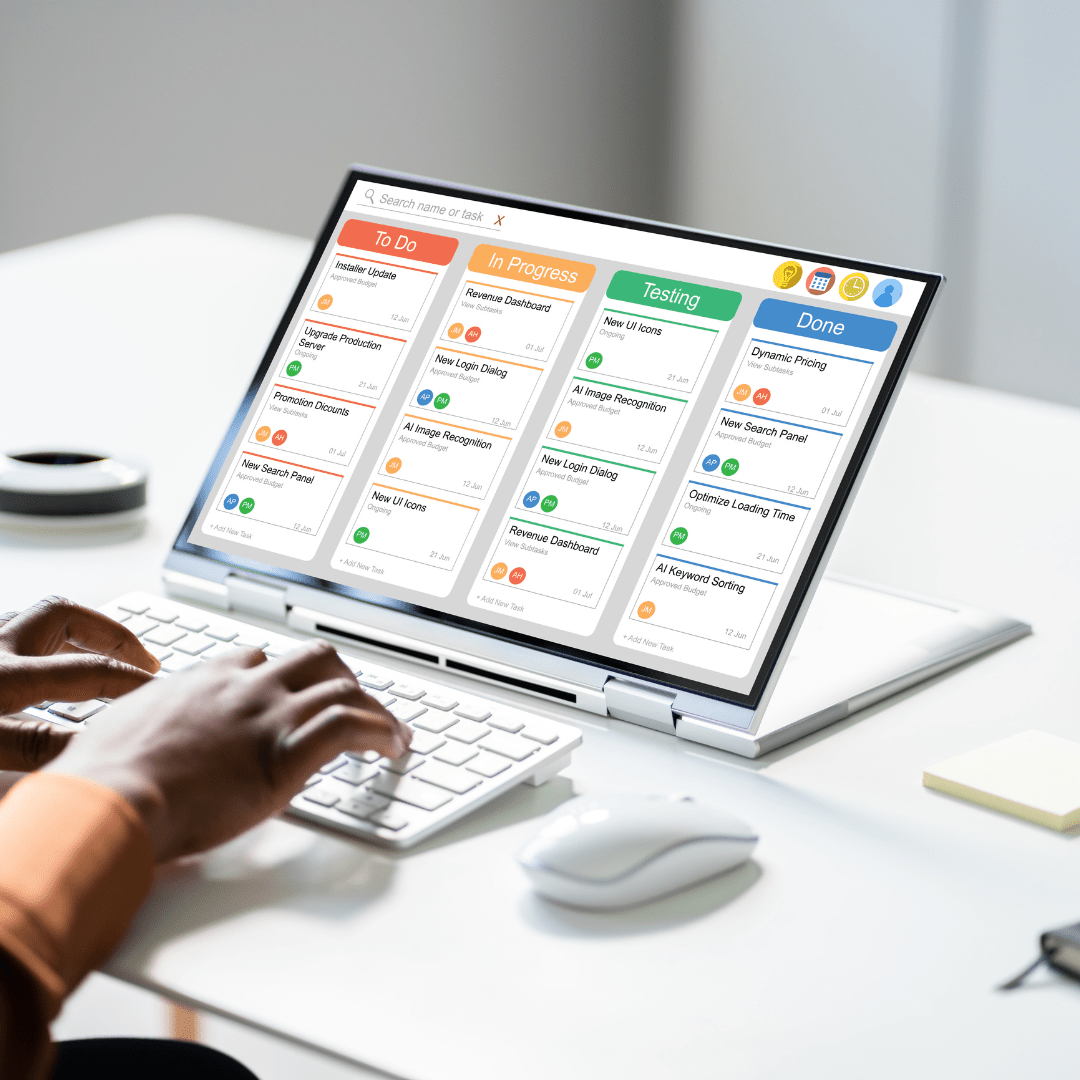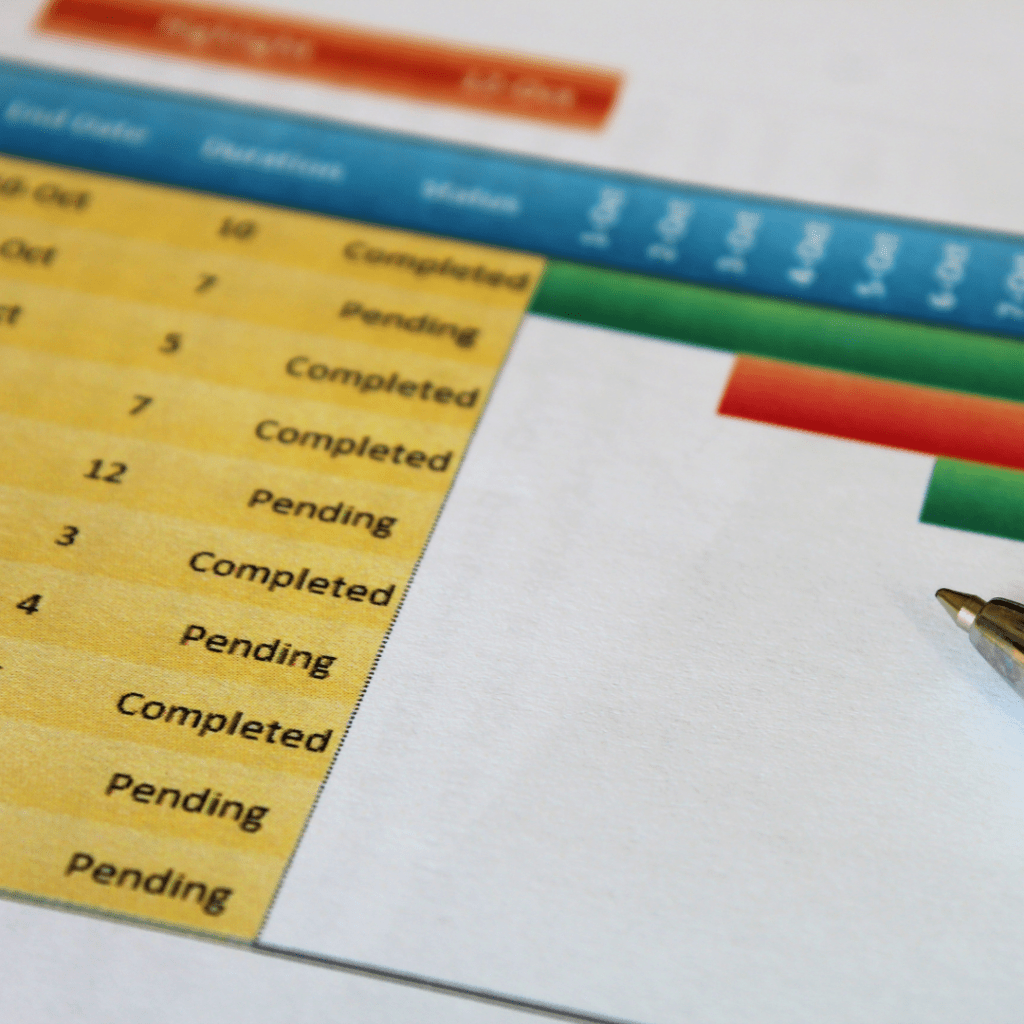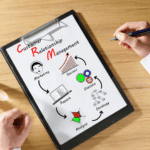
Share The Love:
Table of Contents
Running a small business comes with many challenges—tight budgets, limited resources, and the constant need to juggle multiple tasks. Without a structured approach, projects can become overwhelming, deadlines slip, and productivity suffers.
That’s where effective project management makes all the difference. By implementing the right task and project management strategies, you can streamline operations, improve team collaboration, and ensure that every project moves forward efficiently.
In this guide, we’ll break down the best project management methodologies to help small business owners and their teams stay organized, meet deadlines, and achieve project objectives.
What is task management in project management?
Task management is the process of planning, organizing, and tracking individual tasks within a project. It involves breaking down larger projects into smaller, more manageable tasks and assigning them to team members with defined deadlines.
Effective task management is crucial for project success as it helps keep everyone on track and accountable for their specific responsibilities. It also allows for better resource allocation and helps identify potential roadblocks or bottlenecks early on in the project.
The Importance of Communication in Project Management
Communication is key to successful project management. Clear communication between team members ensures that everyone has a shared understanding of project goals, timelines, and expectations. This helps prevent misunderstandings and promotes collaboration.
Project managers should establish regular check-ins and status updates with their team to keep everyone informed of progress and any changes in project scope or deadlines. Additionally, having a centralized project management tool where team members can communicate and collaborate in real-time can greatly improve communication and productivity.
The Key Benefits of Effective Project Management
Adopting project management tools and methodologies can have a significant impact on your business. Here’s why:
- Clarity in Project Goals: A well-defined project plan provides a clear roadmap for the team, ensuring everyone understands their roles and how their work aligns with the company’s objectives. This shared vision helps avoid confusion and keeps the team motivated toward a common purpose.
- Better Task Prioritization: Task management software breaks large projects into smaller, manageable tasks, making it easier to focus on what’s most important. Prioritizing tasks ensures that the team works efficiently, tackling high-impact activities first while staying on track to meet project deadlines.
- Improved Resource Allocation: Assigning the right people and tools to the right tasks is critical for efficiency. Proper resource allocation prevents bottlenecks, minimizes downtime, and ensures that team members are working to their strengths, leading to better overall performance.
- Enhanced Collaboration: Effective teamwork is essential for project success. Keeping the entire team on the same page with collaborative tools and regular updates fosters better communication, encourages idea-sharing, and builds a stronger sense of unity among team members.
- Meeting Deadlines: Monitoring project progress regularly allows teams to identify delays early and adjust timelines or resources as needed. Staying proactive about deadlines prevents last-minute rushes and ensures that deliverables meet client expectations on time.
- Risk Management: Identifying potential risks early in the project helps teams anticipate challenges and prepare solutions before problems arise. Proactive risk management minimizes disruptions and keeps the project on course, even when unexpected hurdles appear.
Setting Clear Goals and Creating a Detailed Project Plan
A successful project manager ensures that projects start with clear goals and a well-defined roadmap. Without this, teams can struggle to align their work with business objectives.
How to Set Effective Project Goals
- Use the SMART framework (Specific, Measurable, Achievable, Relevant, Time-bound) to define project objectives clearly. This ensures your objectives are well-structured and focused, making them easier to follow and measure success along the way.
- Break down larger goals into smaller, individual tasks, creating a step-by-step plan. This approach makes execution more manageable, helps your team stay organized, and reduces the risk of feeling overwhelmed by the scope of the project.
- Align every task with broader business goals to ensure each effort contributes to meaningful progress. This not only keeps the project on track but also ensures that resources are being used effectively to drive organizational success.
Crafting a Detailed Project Plan
- Outline the entire project lifecycle, from initiation to completion, ensuring every phase is clearly defined and planned for seamless execution.
- Define key milestones and track progress using Gantt charts, which provide a visual breakdown of tasks and timelines to keep everyone on the same page.
- Assign responsibilities to team members so everyone knows their role, ensuring accountability and collaboration across all departments involved.
- Set realistic project deadlines to maintain momentum and keep the team motivated, while allowing flexibility for any unexpected challenges along the way.
Choosing the Right Project Management Methodology
Different projects require different approaches. Understanding project management vs. task management is crucial for picking the best method.
Popular Project Management Methodologies
- Agile Project Management: A highly flexible and collaborative approach that works best in fast-paced environments where requirements may change frequently. Teams can adapt quickly, making it ideal for software development and other industries requiring constant adjustments.
- Scrum: A subset of Agile, Scrum organizes work into short, iterative sprints, typically lasting 1-4 weeks. Each sprint delivers a usable product increment, allowing teams to regularly review progress and make improvements. It’s widely used for projects requiring rapid development and feedback.
- Waterfall: A traditional, structured, and linear approach where each phase of the project is completed before moving to the next. This method is best suited for projects with clear, well-defined requirements and deliverables, such as construction or manufacturing.
- Kanban: A visual project management method that uses boards with columns to track tasks in real-time. Work is organized and moved through stages like “To Do,” “In Progress,” and “Completed.” It’s great for optimizing workflows and managing tasks efficiently.
For small businesses, Agile and Kanban are often the best fit due to their adaptability and ease of use.
Leveraging Task and Project Management Software
The right task management software can simplify managing projects, keeping all team members aligned and efficient.
Top Project Management Tools for Small Businesses
- Trello – Perfect for visually tracking tasks with easy-to-use Kanban boards. It’s great for teams wanting a simple, intuitive way to organize workflows and manage day-to-day tasks.
- Asana – Ideal for managing complex projects, breaking them into smaller actionable tasks, and clearly assigning responsibilities to team members. Asana also provides options for setting deadlines and tracking progress.
- com – A highly flexible platform that lets you organize multiple tasks, collaborate with teams, and generate detailed project reports. Its customization features make it suitable for projects of all sizes.
- ClickUp – A powerful, all-in-one tool for monitoring project progress. It includes built-in dashboards, time tracking, and task prioritization, helping teams stay on top of deadlines and deliverables efficiently.
These tools help small business owners collaborate effectively, delegate tasks efficiently, and monitor progress in real-time.
Effective Communication and Collaboration
Poor communication is one of the biggest roadblocks in managing stakeholder expectations and ensuring project success.
Strategies for Effective Communication
- Establish clear communication channels to ensure seamless collaboration among team members. Define how and when the team will communicate, whether through email, video calls, or messaging platforms. This clarity reduces misunderstandings and keeps everyone on the same page.
- Hold regular check-ins to discuss updates, address any challenges, and identify project risks early. These meetings create a consistent flow of information and offer an opportunity to align on goals and timelines.
- Encourage transparency so every team member stays informed about the project lifecycle, including progress, setbacks, and future milestones. A transparent approach fosters trust and a shared sense of responsibility across the team.
- Use tools like Slack or Microsoft Teams for instant messaging, file sharing, and quick collaboration. These platforms streamline communication and make it easy to stay connected, even when working remotely or across time zones.
Managing Workflows and Resource Allocation
Proper resource allocation ensures that no one is overloaded while keeping productivity high.
Techniques to Optimize Workflows
- Prioritize tasks using the Eisenhower Matrix (Urgent vs. Important). This method helps you focus on what truly matters by categorizing tasks into four quadrants: urgent and important, important but not urgent, urgent but not important, and neither urgent nor important.
- Automate repetitive tasks to free up time for high-value work. By using automation tools, you can streamline processes like data entry, email responses, or scheduling, giving you more time to focus on strategic goals.
- Assign work based on skills and capacity to avoid burnout. Matching tasks to individual strengths ensures productivity while preventing team members from feeling overwhelmed by an unbalanced workload.
- Use Gantt charts to visualize timelines and dependencies. These charts provide a clear, visual view of project progress, helping teams stay on track and ensuring that everyone knows how tasks are interconnected and when deadlines are approaching.
Tracking Project Progress with Key Performance Indicators (KPIs)
To measure the effectiveness of your task and project management, it’s essential to track specific KPIs (Key Performance Indicators) that provide clear insights into your progress and performance. Here are some critical KPIs to consider:
- Project completion rate – This KPI tracks how many projects are completed on time, helping you understand your team’s ability to meet deadlines and identify any bottlenecks causing delays. A high completion rate indicates efficient planning and execution.
- Budget adherence – This ensures that costs remain within planned budgets. By monitoring how closely your spending aligns with your forecasts, you can manage resources effectively and avoid unnecessary overspending, which is critical for long-term success.
- Team productivity levels – This evaluates both individual and team contributions, giving insight into your team’s efficiency and areas where they may need additional support or resources. High productivity often reflects strong collaboration and motivation.
- Stakeholder satisfaction – This measures how well the project meets the expectations of clients, team members, and other stakeholders. High satisfaction levels demonstrate that the project is aligned with goals, delivering value to everyone involved.
By using project reports and analytics tools, you can gain valuable insights into these KPIs, enabling you to identify what’s working well, spot areas for improvement, and make data-driven decisions that enhance overall project outcomes. Regularly reviewing these metrics helps you refine your processes and achieve better results over time.
Risk Management and Problem-Solving
Unexpected challenges can arise in any project. A good project manager anticipates risks and proactively addresses them.
How to Manage Risks Effectively
- Identify potential risks early using comprehensive risk assessment tools to anticipate and address issues before they escalate.
- Develop contingency plans for common obstacles, ensuring your team has clear, actionable steps to follow in case challenges arise.
- Encourage team input on problem-solving strategies to foster collaboration and leverage diverse perspectives for more effective solutions.
- Review past projects thoroughly to learn from previous challenges and apply those lessons to improve future outcomes.
With the right risk management approach, you can complete projects with minimal disruption.
How Swell Systems Helps You Master Project Management
At Swell Systems, we understand that small business owners wear multiple hats. Managing projects effectively shouldn’t be overwhelming.
Our task and project management solutions are designed to:
- Streamline your workflows with tools designed to reduce complexity and save time, helping you focus on what matters most.
- Provide intuitive tools for assigning responsibilities, ensuring every team member knows their role, and tracking progress with ease to stay on top of deadlines.
- Offer clear insights into your entire project lifecycle, from planning and execution to completion, giving you full visibility at every stage.
- Help you collaborate effectively with your team and foster better communication, alignment, and results.
Whether you need help organizing daily tasks, tracking project deadlines, or optimizing resource allocation, Swell Systems makes it easy.
Take Your Project Management to the Next Level
Now that you understand how effective project management can transform your business, it’s time to take action.
What’s Next?
- Evaluate your current task and project management approach to identify what’s working and where there’s room for improvement.
- Choose a project management software that fits your team’s specific needs, considering factors like ease of use, features, and scalability.
- Implement clear communication strategies to ensure everyone stays on the same page, and track progress consistently to measure success and address issues proactively.
- Stay flexible and adjust your approach as needed to adapt to changes, ensuring your workflow remains efficient and effective over time.

Looking to streamline your project management and enhance productivity for your small business? Discover how Swell Systems can help your team effortlessly achieve its project goals. Explore our features today!
Tags
Share This



